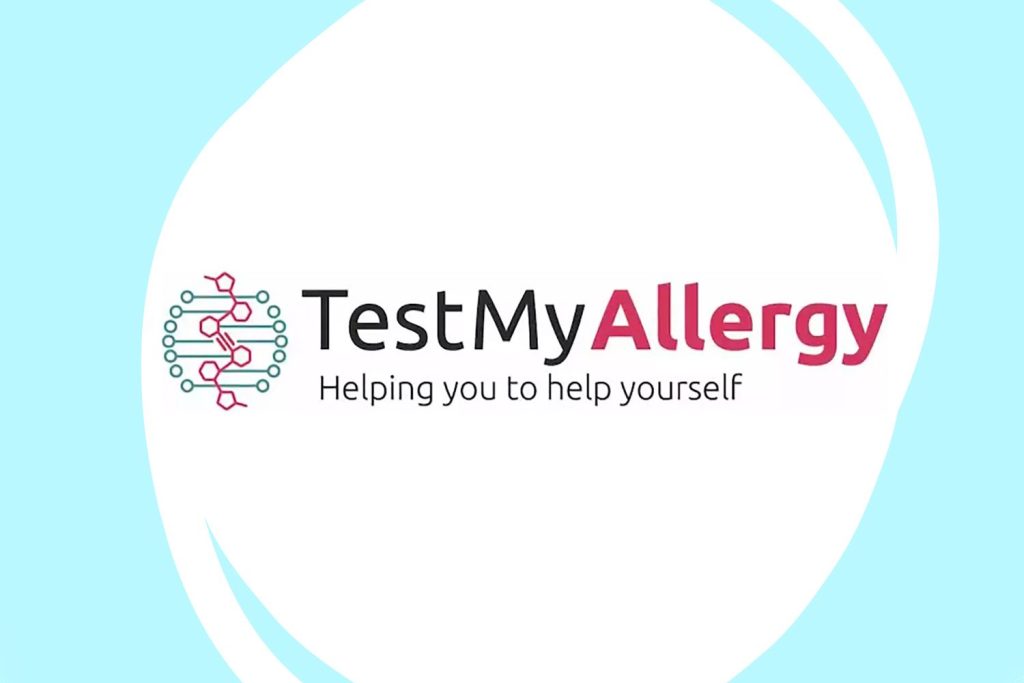In an era where at-home health diagnostics are booming, www.testmyallergy.com positions itself as a convenient solution for allergy sufferers. Promising to identify sensitivities to common allergens through a simple finger-prick blood test, the service claims to empower users with actionable insights. Skeptical but curious, I decided to put it to the test—here’s my candid experience.
First Impressions: Website Navigation and Ordering Process
The website greets visitors with a clean, medical-aesthetic design dominated by calming blues and whites. A bold headline—“Discover Your Allergies from Home”—immediately clarifies its value proposition. Scrolling down reveals concise sections explaining the science (IgE/IgG antibody testing), testing categories (food, environmental, seasonal), and a reassuring list of partnered labs (CLIA-certified, though specifics are vague).
Ordering the Premium Allergy Test ($149, covering 113 allergens) was straightforward. The checkout process included a brief questionnaire about allergy symptoms and medical history—a thoughtful touch to personalize results. Payment options were limited to credit/debit cards; no PayPal or Apple Pay support. Within minutes, a confirmation email arrived with a UPS tracking link. The kit shipped within 48 hours, arriving in discreet packaging—no branding to signal its medical purpose.
Unboxing the Kit: What’s Inside?
The kit includes:
- Sterile lancet and collection card
- Alcohol prep pad and bandage
- Detailed illustrated instructions
- Prepaid return envelope
- Unique barcode for sample tracking
Everything felt hygienic and well-organized. The instructions, available in both English and Spanish, were simple but thorough—critical for users uneasy about self-administered blood sampling. Notably absent: gloves or a biohazard bag for the used lancet, which might concern eco-conscious users.
The Finger-Prick Moment: Easier Than Expected?
As someone squeamish about needles, I appreciated the lancet’s “click-and-release” design. After disinfecting my fingertip, I pressed the device against my skin. The prick was quick and minimally painful—comparable to a mosquito bite. Collecting the required 5-6 blood droplets onto the card took patience; my first attempt yielded insufficient volume, requiring a second prick. The process took 15 minutes total, and sealing the sample felt secure.
Return Logistics and Waiting Period
Dropping the prepaid envelope at a UPS store was hassle-free. The website’s tracking portal updated within 24 hours (“Sample Received at Lab”), followed by a 5-7 business day processing period. True to their word, my results arrived via email on day 6.
Decoding the Results: Clear or Confusing?
The report opens with an overview of IgE (immediate) and IgG (delayed) reactivity levels, categorized as “Low,” “Moderate,” or “High.” My test flagged:
- IgE reactions: Grass pollen (High), dust mites (Moderate)
- IgG reactions: Cow’s milk (Moderate), eggs (Low)
Each allergen includes a “Reactivity Score” bar graph and a brief explanation (e.g., “Associated with digestive discomfort”). The “Action Plan” section advised elimination diets for food sensitivities and OTC antihistamine recommendations for environmental triggers.
The Good:
- Visual clarity: Color-coded results are easy to skim.
- Contextual advice: Links to recipes for eliminating flagged foods.
- No alarmist language: Emphasizes correlation, not diagnosis.
The Bad:
- IgG controversy: Many allergists dispute IgG testing’s validity for food sensitivities, as highlighted in a 2020 AAAAI statement. The website’s FAQ acknowledges this debate but downplays it.
- Overwhelming data: 113 allergens generated a 22-page PDF. First-time users might struggle to prioritize actionable changes.
Accuracy Check: Does It Align with Reality?
My IgE results mirrored previous clinical tests (grass pollen allergy confirmed via skin prick test). However, the IgG “sensitivity” to cow’s milk puzzled me—I consume dairy daily without noticeable issues. A registered dietitian I consulted called this a common IgG testing pitfall: “IgG antibodies often reflect exposure, not intolerance.” This raises questions about the test’s clinical utility for foods.
Customer Support: Helpful or Hindering?
I tested their support channels:
- Live Chat: Responsive but scripted. Asked to “allow 7 days for results” when I inquired about delays (my report arrived before their deadline).
- Email: Took 32 hours to reply, but the response included a PDF guide to interpreting scores.
- No telehealth follow-up: Competitors like Everlywell offer clinician consultations—a missed opportunity here.
Price vs. Value: Is It Worth the Cost?
At 149,TestMyAllergyundercutscompetitorslikeQuestDirect(149,TestMyAllergyundercutscompetitorslikeQuestDirect(199+) but costs more than DIY options like myLAB Box (99).Forthosewithsuspectedenvironmentalallergies,theIgEcomponentprovidescredibleinsights.However,theinclusionofIgGfoodtesting—a99).Forthosewithsuspectedenvironmentalallergies,theIgEcomponentprovidescredibleinsights.However,theinclusionofIgGfoodtesting—a75 add-on in many services—feels like padding, given its disputed relevance.
Privacy and Data Security
The privacy policy states that data is anonymized and not sold to third parties. However, the lack of HIPAA compliance disclosure (unlike Everlywell) gave me pause. Users must trust that a non-medical company handles sensitive health data responsibly.
Competitor Comparison
Compared to leading alternatives:
- Everlywell: More clinician involvement, HIPAA-compliant, but pricier ($199).
- myLAB Box: Cheaper food sensitivity tests, but fewer environmental allergens.
- AllergyCheck: FDA-cleared for IgE testing, but no IgG component.
TestMyAllergy’s edge lies in its allergen range, but its refusal to acknowledge IgG limitations feels ethically murky.
Pros and Cons at a Glance
Pros
- Fast, user-friendly sample collection
- Comprehensive environmental allergen panel
- Transparent result visualization
- Competitive pricing
Cons
- IgG testing’s questionable validity
- No clinician support
- Overwhelming report for beginners
- Limited payment/data privacy assurances
Who Should Use This Service?
- Curious sufferers: Those with unexplained mild symptoms (rashes, congestion) seeking a starting point.
- Environmental allergy patients: IgE testing for pollen/dust aligns with medical standards.
- Avoidance dieters: Willing to experiment, despite IgG’s controversies.
Who Should Avoid It?
- Severe allergy sufferers: Anaphylaxis risks require clinical supervision.
- Evidence-first users: Skeptical of non-FDA-cleared IgG tests.
- Budget-conscious buyers: Cheaper alternatives focus on IgE-only.
Final Verdict: A Mixed Bag with Caveats
TestMyAllergy.com delivers on convenience and environmental allergy insights but falters by promoting contested IgG food sensitivity claims. The process is seamless—from kit delivery to lab turnaround—and the report’s design deserves praise for accessibility. However, the service walks a fine line between empowerment and exploitation of the $4 billion food sensitivity industry’s gray areas.
For those using results as a conversation starter with their doctor—rather than a diagnostic endpoint—it offers value. But until the company addresses IgG criticisms head-on (e.g., offering IgE-only tiers), it remains a half-step behind more transparent competitors.
https://www.testmyallergy.com/







